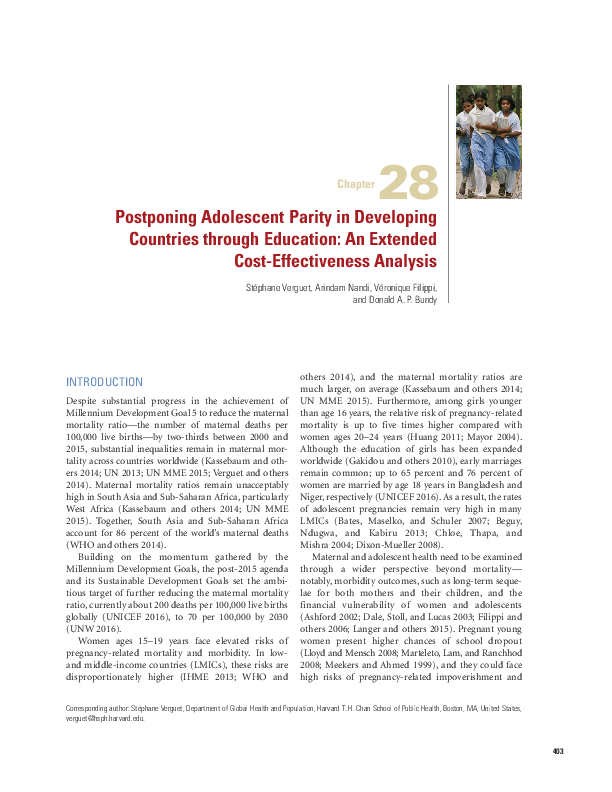
DCP Chapter 28: Postponing Adolescent Parity in Developing Countries through Education: An Extended Cost-Effectiveness Analysis
Publication year:
2017
English
Format:
pdf (137.6 KiB)
Publisher:
The World Bank Group
This chapter examines the potential impact on maternal mortality and impoverishment of the increase in the level of female education by one school year for a cohort of adolescent women, ages 15–19 years, in Niger and India. The use of the extended cost-effectiveness analysis (ECEA) methodology (1) enables the assessment of the impact of public policies on distributional consequences and their benefits in protecting against impoverishment, in addition to the traditional dimension of health benefits; and (2) provides critical additional metrics to policy makers inside and outside the health sector when allocating financial resources. Increased educational attainment for adolescent girls could bring large poverty reduction benefits in addition to significant health benefits by avoiding early pregnancies and maternal deaths. The extent of these gains varies significantly across socioeconomic groups, with more lives saved in the poorer groups—because they face higher rates of early pregnancy—and more out of pocket (OOP) expenditures averted in the richer groups—because they use more health care.
>> Press here to return to the Disease Control Priorities (3rd Edition) Start Page
Read full abstract
Authors
View & Download
Document information
Publisher
Format
Rights
© Author/Publisher
Found a mistake? Help us improve!
If you have noticed a document assigned to the wrong author or any other inaccuracies, let us know! Your feedback helps us keep our data accurate and useful for everyone.
Share
Link
